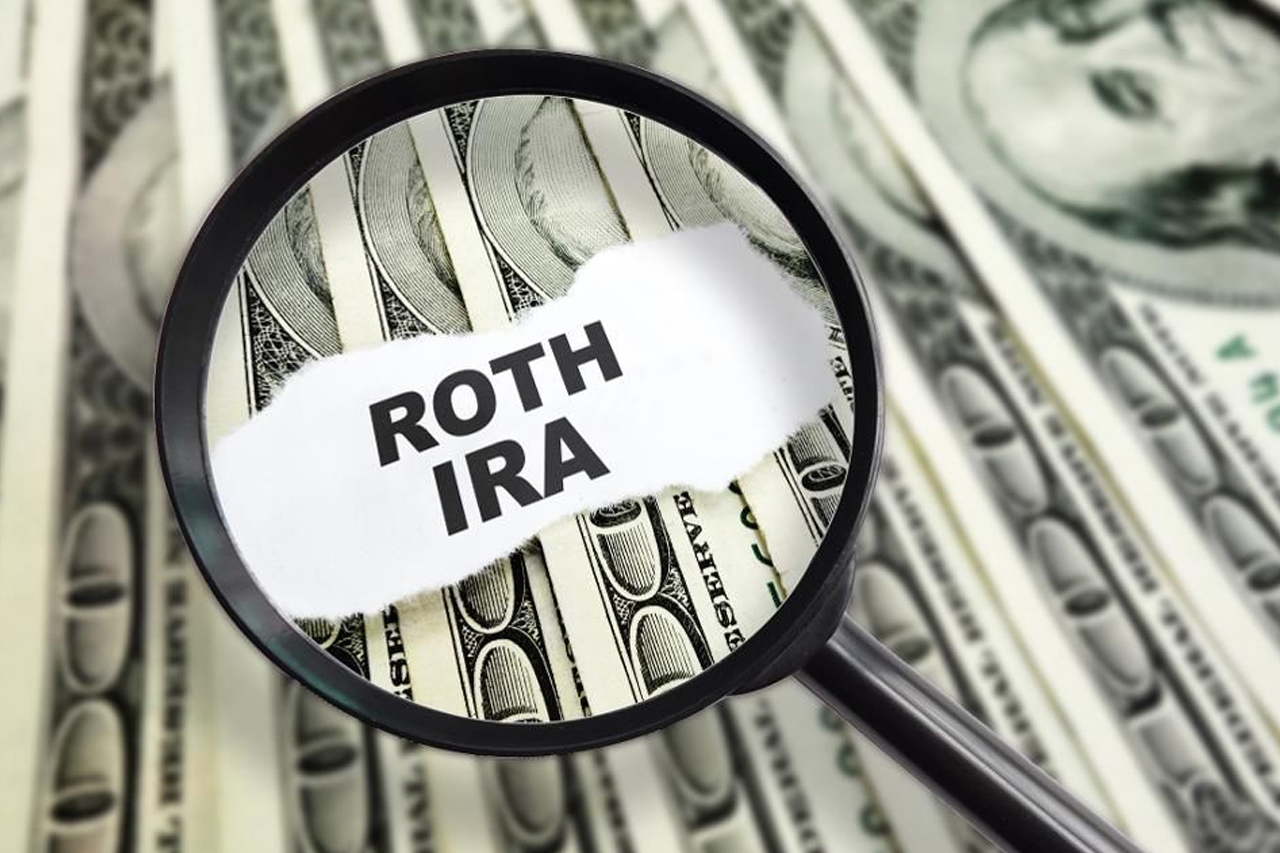According to the 2024 Insurance Barometer Study conducted by LIMRA and Life Happens, having enough money for a comfortable retirement is the number one concern for adults ages 18 to 75.
While nearly 60% of Americans have a tax-advantaged retirement account, such as an IRA or 401(k), only half of Americans polled in an AARP Financial Security Trends Survey think they’re saving enough for retirement.
Whether you’re just getting started or nearing the end of your professional life, reviewing your retirement goals and efforts can help you better prepare for financial needs when you reach retirement age. To help you retire on time, we’ve developed a retirement plan checklist to keep track of your goals.

10+ Years Before Retirement
The earlier you start planning for retirement, the more likely you will be to reach your goals and reach them early. If you’re ten or more years away from retirement years, consider doing the following:
Open a Tax-Advantaged Retirement Plan
The best way to prepare for retirement is to open a tax-advantaged retirement plan, such as a Traditional IRA, Roth IRA, SIMPLE IRA, or 401(k). When you contribute money to these accounts, the funds grow at a tax-advantaged rate, earning compound interest until withdrawn in retirement.
Set aside a monthly number to contribute to your retirement plan. Maximizing annual contributions will allow you to compound the earnings in your account even further and help you save faster for retirement.
Estimate Expenses and Build a Budget
Opening and contributing to a retirement account is a great way to start planning, but to truly ensure the type of retirement you want, it’s important to build a budget and estimate the expenses you’ll incur in retirement. These expenses include the cost of housing, utilities, health-related costs, insurance, and everyday expenses. You can also account for any travel or leisure costs that you may enjoy in your golden years.
Once you have an estimated calculation of how much money you’ll need monthly, you’ll need to calculate how much money you’ll need to sustain this amount of spending throughout your retirement.
Tip: Don’t just budget for retirement. Creating and sticking to a budget in the present can help you maximize your income and retirement account contributions to further prepare for your future.
Talk to a Financial Professional
Financial advisors can help you plan for retirement by offering practical advice and helping you create a budget. For instance, a financial expert can help you choose which type of retirement account or accounts are best for you while also advising you on other financial products, such as life insurance or annuities.
Pay Off Debts
Debt can depress your monthly budget and rob you of compound interest that could be better spent in a retirement plan. Therefore, the faster you pay off your debt, the more you’ll be able to contribute to a retirement account earlier in life and take advantage of compounding interest.
Note: Even if you have debts, don’t assume that means you can’t contribute to a retirement at the same time. Instead, speak to a financial advisor who can analyze your debt, income, and other expenses to determine the best approach.
Build Your Savings
Qualified retirement plans are imperative to a comfortable retirement, but don’t neglect other financial products, especially savings accounts. Building your savings account can help you manage any unexpected expenses that may occur before retirement, helping you avoid situations where you need to tap into your retirement account early.
BONUS: Self-Direct Your Retirement Plan for Greater Compound Interest
One of the major benefits of retirement accounts is they let you leverage compound interest. That means you’re earning interest on the money you saved as well as the interest earned off those savings.
Most assets produce compound interest, but some do so more than others. A self-directed IRA (SDIRA) allows you to invest in alternative assets, such as real estate, precious metals, and cryptocurrency, all of which can further boost compound interest. Best of all, with a Roth SDIRA, all earnings flow back into your retirement account without capital gains taxes.
Consider whether you are more confident playing the real estate market or the stock market to meet your retirement goals.
Maximize Contributions with Catch-Up Contributions
If you’re over 50, you may be able to leverage catch-up contributions, depending on the type of account you have. Catch-up contributions are IRS-determined and allow you to exceed the baseline contribution limit by a predetermined amount.
For instance, in 2025, the catch-up contribution for IRAs is $1,000. The baseline contribution limit is $7,000, meaning if you meet the age requirements, you can contribute a total of $8,000.
If you have a 401(k), 403(b), or governmental 457 plan, you can contribute an additional $7,500.
5 Years Before Retirement
Five years may seem like a lifetime away, especially if you’re looking forward to retirement, but it’s close enough that you’ll need to complete some key tasks to properly prepare for retirement.
Set a Retirement Date
Once you are 5 years away from retirement, it’s time to consider the actual date (or at least a month) you retire. Retirement dates that fall at the end of a month or year can help you maximize your retirement savings, but that’s not the only thing to consider.
Take Stock of Savings and Retirement Assets
When choosing a date and understanding the financial reality of retirement, it’s important to take into account all your investments and financial assets. This includes social security, savings, annuities, and any other financial source you may have.
Tip: You should also consider these assets when setting a retirement date, as your chosen date can directly affect those accounts.
Open a Health Savings Account to Manage Healthcare Expenses
Opening a health savings account (HSA) provides a tax-advantaged way to save money for medical expenses. Contributions are tax-deductible, and funds in the account grow tax-free. Withdrawals for qualified medical expenses are also tax-free. HSA funds can be withdrawn and used for non-medical expenses without penalty once you reach 65, though taxes apply.
Consider Where You Will Retire
Where you choose to retire can have a significant impact on your finances. Downsizing your home or moving to an area with a lower cost of living can free up additional savings for other retirement expenses.
For example, selling a larger home and purchasing a smaller one can reduce property taxes, maintenance costs, and utilities. Additionally, relocating to a region with a lower cost of living or favorable tax policies can stretch your retirement savings further, allowing for a more comfortable lifestyle with fewer financial worries.
Set Aside an Emergency Fund
A retirement plan isn’t just about planning for the life you want. You also need to plan for the unexpected, like medical bills, home repairs, and other unexpected costs you may incur. How much should you set aside? Financial experts often differ, but a good rule of thumb is enough for 12 months of expenses
6-Months to 1-Year Before Retirement
When retirement is on the horizon, it’s time to solidify your plan. Here are some things you can do one year from retirement to shore up your plan.
Plan for RMDs (Traditional retirement plans only)
If you have a Traditional retirement plan, you must start taking required minimum distributions (RMDs) at age 73. RMDs are determined by an IRS-established life expectancy factor and the balance of your account.
RMDs are taxable, so understanding how much you need to withdraw and when will help you plan for the tax implications.
Decide Which Assets to Liquidate
Taking withdrawals in retirement means liquidating portfolio assets, such as stocks, bonds, or even real estate. In general, withdrawing from taxable accounts first is recommended, though it’s wise to speak to a financial expert who can review your retirement accounts, income, and tax implications of a particular account or asset.
Make a Plan for Social Security/Medicare Benefits
Deciding when and how to begin receiving Social Security benefits is a key decision in the year before retirement. You can start taking benefits as early as age 62, but your monthly benefit will increase if you wait until 67, which is the full retirement age.
Additionally, make sure you are enrolled in Medicare, which generally begins at age 65. Understanding the timing of these benefits and how they fit into your overall income plan can help you optimize your financial situation during retirement.
Take Care of Any Remaining Major Expenses
Minimizing your financial obligations prior to retirement can free up funds and help you live a more financially comfortable life. Focus on paying down debts, like credit cards or personal loans, as well as your mortgage. Prioritize high-interest debts that will cost you more in the long run.
Determine if You Have Enough to Retire
Retirement plans like IRAs, 401(k)s, and pensions are just one piece of the puzzle. Before you leave the workforce, take stock of all your income sources, including social security, savings accounts, and annuities. Next, tally up anticipated expenses and make sure that you have enough income to comfortably retire.
Consider an Annuity if Your Budget Doesn’t Line Up
If you calculate all your expenses and they don’t line up with your anticipated retirement budget, an annuity may help. An annuity is a financial product that provides regular installment payments over a period of time in exchange for a lump sum payment or periodic payments.
An annuity is a financial product that provides you with regular payments over time, often for the rest of your life. Often offered by life insurance companies, an annuity can supplement retirement plan withdrawals and provide a steady income.
The Benefits of Planning Early for Retirement
The earlier you start planning for retirement, the better off you’ll be. An early start allows you to:
- Take advantage of compound interest and tax-free growth while funds are in your qualified retirement account. Horizon Trust provides a free compound interest calculator to help you predict how much you can save for retirement.
- Strategically adjust your investment strategy to match your intended retirement date.
- Recover from market downturns, unexpected expenses, or gaps in employment.
- Reduce the amount of stress that can be associated with retiring after minimal years of saving.
Ultimately, planning for retirement early will make it easier to accumulate the wealth you need without making significant financial sacrifices later in your career or during retirement.
Additional Resources
If you need additional help planning for retirement, check out these helpful articles and pages by Horizon Trust below:
- Top 10 Effective Retirement Plans to Ensure Timely Retirement
- Am I Saving Enough for Retirement?
- Self-directed Retirement Plans: 4 Benefits
- Self-directed IRA Investment Options: Your Complete List
Helpful IRS resources:
- Types of retirement plans – provides a comprehensive list of qualified retirement plans with the option to view more details about each.
- Rollover guidance – offers advice on how to roll over funds from one account to another, such as from a 401(k) to an IRA.
- Required minimum distribution calculator
- Contribution limits by plan type
FAQs
How much do I need to save for retirement?
There’s no single answer to how much you need to save, but experts often recommend saving between 10 and 12 years of your salary while employed. As you plan, it’s also helpful to take into account key factors that will affect how much you need, such as housing, medical and insurance expenses, assets you’ll be able to rely on, and what you want your retirement years to look like.
When should I start saving for retirement?
It’s never too early to start saving for retirement. The earlier you start, the more money you’ll accumulate via direct contributions, dividends, earnings, and compound growth. Ideally, you should begin saving in your 20s, but if that’s not possible, begin saving as soon as your financial situation allows. Even minimal contributions early in life will better position you for retirement.
Should I invest in a Roth or traditional retirement account?
Both Roth and Traditional IRAs have their benefits. Here are a few things to consider when choosing between the two.
- Your income tax rate. A Traditional IRA may be a good option if you anticipate being in a lower income tax bracket during retirement. That’s because these accounts are funded with pre-tax dollars, and you pay income taxes on withdrawals. Conversely, if you think you’ll be in a higher tax bracket in retirement, a Roth account may be the way to go. Roth accounts are funded with after-tax dollars, but won’t pay taxes on withdrawals during retirement.
- Required minimum distributions (RMDs). If you have a traditional IRA, the IRS requires you to take RMDs after the age of 73. RMDs are determined by an IRS formula based on your account balance and life expectancy. There’s nothing inherently wrong with RMDs, though some individuals would prefer to leave funds in their accounts as long as possible. Roth IRAs do not require RMDs.
- Income and tax filing status. Both traditional and Roth IRAs have an annual contribution limit. Still, if you have a Roth IRA, your annual contribution may be lower or $0, depending on your adjusted gross income (AGI) and tax-filing status.
For example, if you’re married and filing jointly and your combined income is equal to or more than $230,000 but less than $240,000, your contribution limit will decrease. If your income is equal to or more than $240,000, you won’t be able to contribute to a Roth account in that year.
Contribution limits can change annually, so review them each year to determine if you’re eligible for Roth contributions. Note that rollovers, earnings, and interest are not considered contributions.
Greg Herlean
Greg has personally managed over $1.4 billion in financial transactions via real estate investing and fixed and flipped over 450 homes and 2000 apartment units.
His aptitude for business has helped him to provide management direction, capital restructuring, investment research analysis, business projection analysis, and capital acquisition services.
However, these days he is mainly focused on being a professional influencer and educating investors about the benefits of using self-directed IRAs for tax-free wealth management. He is also a devout family man who enjoys spending his free time with his wife and children.
Greg Herlean’s journey started at 19 years old when he made a 2-year journey to Guayaquil, Ecuador, and volunteered to help less fortunate families. As a result, he learned many foundational lessons about faith, community, and hard work, which have helped him in his business success. Using these lessons, he was able to slowly build his wealth through real estate investing and establish Horizon Trust in 2011.
Related Posts
July 15, 2025
Ultimate Cheat Sheet for Investing with a Roth IRA
A Roth IRA is a retirement savings account that offers tax-free investment…



